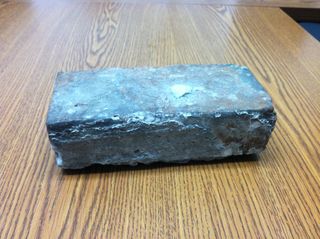Law and Crime
The Murder Market
A novelist explores the death collecting trade.
Posted September 25, 2016

Fascination with murder is a mostly benign pastime for true crime buffs. However, a more intense interest in violent death feeds a thriving trade in murderabilia. Activist Andy Kahan coined the word to describe items associated with crime that get hawked to the highest bidders. Among coveted pieces are letters, drawings, paintings, and poems from killers, especially the most notorious serial killers.
Some collectors believe that touching an item intimately connected to a killer has a talisman effect: they're now protected from being murdered themselves. This superstition seems harmless enough, but just how dark does all of this get?
Former journalist and now-bestselling novelist Craig Robertson took on this topic in his latest of seven novels, Murderabilia. The title drew me, because I’ve documented this dark marketplace, albeit before the dark underbelly of the Web was quite as active as Robertson describes. I’m familiar with the sellers and buyers, the conventions, the secretive trade, and the types of items one can get. When I stayed in Lizzie Borden’s former home, in the room where her stepmother was slaughtered with an axe, I was given a brick from the original chimney. Touching it elicited an electric creepiness. Still, I don’t want a killer's toenails, spit, or pubic hair (yeah, that’s out there).
The available items range from cute to ironic to downright nasty. Charles Ng, once part of a killing team, sold origami animals; “Boston Strangler” Albert DeSalvo made ‘choker’ necklaces; and cult leader Charles Manson offered puppets knit from the unraveled wool of his prison socks (possibly unwashed). Sometimes the “artwork” is just a hand tracing or doodle, but it could be a selfie-in-oil by killer clown John Wayne Gacy. Murderabilia includes murder weapons, dirt from a body dumpsite, chips from a demolished murder house, skin wallets made from an executed killer, or crime scene and autopsy photos. Nothing is too gruesome for some collectors, and some are obsessed with ownership.
And that’s the heart (so to speak) of Murderabilia’s plot: just how fixated and depraved some people can get. Set in Scotland, the heroes are Detective Rachel Narey, a pregnant officer at risk of losing her baby, and her boyfriend, Tony Winter, a photojournalist looking for the ultimate front-page photo. Together, they descend into the Dante’s Inferno of the death trade, with its increasingly more horrifying appetites and addictions. It's not just a shadow world; in some places, it's downright black.
The intrepid team finds websites where the murder trade thrives, some legal and some anything but. Gaining access has protocols and risks – terrible ones. But they know that backing down has equally daunting consequences. The writing is adhesive and the twists terrific. I was as hooked as the guys seeking to purchase clothes fresh off a murder victim.
But this novel also profiles a serious addiction that sends people well outside moral lines, who justify their acts within the furtive camaraderie of others like themselves. One thing we've seen with the Internet age: the normalization of perversion. You can find like-minded loonies for just about any depravity. Robertson uses this theme to create characters and plotlines that will make many readers blanch (although some might see themselves in its pages and start seeking "friends").
To explore this world, Robertson collected a few items and probably experienced what it was like to bid in the auctions. It takes a strong stomach to want to touch, let alone own, some of these things. But there’s an undisputed rush of excitement in seeing an auction to its end – and in outbidding everyone else.
My favorite part of this tale was the discovery of an elite collective of creepy men who protected their symbiotic wickedness. And just when you think you’ve pieced it all together somewhere along Hell's seventh circle, you discover it’s much worse – and more pathetic – than you thought.
You might want a long, hot shower after you finish this novel, but even with the story's yuk factor, you’ll appreciate Robertson's elegant craftsmanship and clever structure.


